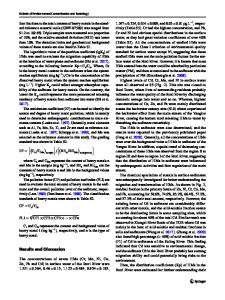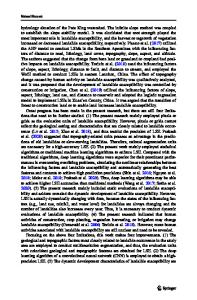Permeability of the reservoir water fluctuation zone of landslide bodies in the Three Gorges Reservoir Area, China
- PDF / 3,309,415 Bytes
- 14 Pages / 595.276 x 790.866 pts Page_size
- 0 Downloads / 379 Views
TECHNICAL NOTE
Permeability of the reservoir water fluctuation zone of landslide bodies in the Three Gorges Reservoir Area, China He Yang 1 & Minggao Tang 1 & Qiang Xu 1 & Quan Zhu 1 & Xinjian Ma 1 & Runqing Ye 2 & Andres Alonso-Rodriguez 3 Received: 11 February 2019 / Accepted: 6 October 2020 # Saudi Society for Geosciences 2020
Abstract The fluctuation of water level in the Three Gorges Reservoir is up to 30 m, and the reservoir water fluctuation zone is the important channel of reservoir water flowing in and out of a landslide. The permeability characteristics and parameters of the reservoir water fluctuation zone of landslide bodies are of great significance for calculating the seepage of the reservoir landslide and evaluating the stability of the landslide. In this paper, 396 landslides in the Three Gorges Reservoir Area were studied, and 1188 test pits were sampled. In an analysis based on test data, the classification indicators of landslides can be divided into two types: provenance lithology and compositional structure. According to provenance lithology, the landslides can be divided into dolomite and limestone, marl, sandstone and mudstone inlaid rocks, siltstone, and argillaceous limestone. In addition, according to the compositional structure, landslide bodies can be divided into fine-grained soil, soil containing gravel stone, soil clip gravel stone, crushed rock soil, and fractured rock mass, where there are three types and five sub-categories. Based on this study, we found that the permeability of the landslide bodies has regional distribution characteristics, which is positively correlated with gravel content and provenance lithology strength and is mainly medium and better. Keywords Compositional structure . Hydro-fluctuation belt . Permeability characteristics . Permeability classification . Provenance lithology
Introduction The Yangtze River is China’s longest inland waterway. Due to the construction of the Three Gorges hydropower station, the Three Gorges Reservoir Area is formed. According to a preliminary survey conducted in 2003, there are 4664 landslides in the area, with most of these being ancient landslides (Yang et al. 2019; Zhang et al. 2020). The Three Gorges Reservoir Area is a high-incidence area of landslide phenomena (Yin Responsible Editor: Zhen-Dong Cui * Minggao Tang [email protected] 1
State Key Laboratory of Geohazard Prevention and Geoenvironment Protection, Chengdu University of Technology, 1, Dongsanlu, Erxianqiao, Chengdu 610059, China
2
Wuhan Geological Survey Center, China Geological Survey, Wuhan 430205, China
3
Facultad de Ingenieria y Ciencias, Universidad Diego Portales, 8370003 Santiago, Chile
and Hu 2004; Lu and Huang 2020). The front edge of 2619 of these landslides is below the high-water level of the reservoir. Therefore, the main research objective of this paper refers to the accumulation body produced after sliding, namely the landslide bodies. The permeability of the landslide is the key factor affecting the stability of the landslide (Paronuzzi et a
Data Loading...











